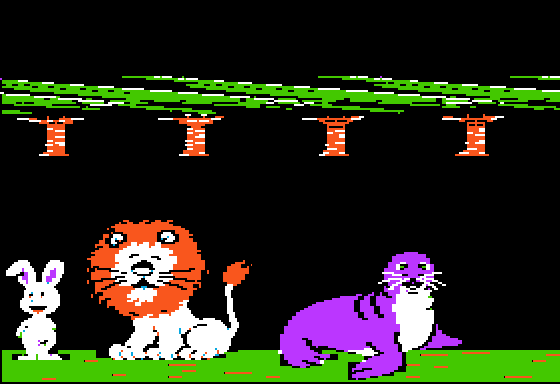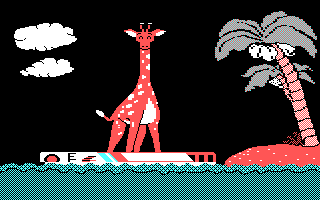Retro Replay Review
Gameplay
How to Weigh an Elephant delivers a straightforward and intuitive gameplay loop designed especially for young learners. Each round presents two charmingly pixelated zoo animals, inviting players to decide which creature is larger or smaller. The game’s simplicity is its greatest strength: by pressing the 1 or 2 keys, children can immediately see whether their estimation is correct, reinforcing basic concepts of size comparison without overwhelming them with complex rules or mechanics.
The pacing is deliberately unhurried, giving kids the time they need to observe each animal, make their judgment, and receive instantaneous feedback. Progress is marked by ten quick screens, each teaching through direct interaction rather than lengthy tutorials. This minimalistic approach keeps the gameplay loop tight and prevents boredom, ensuring that even restless young minds stay engaged throughout the brief session.
Despite its brevity, the scoring system adds a subtle motivational element. After the ten pairings, children see their total correct answers, encouraging them to replay and improve. While there are no power-ups, levels, or elaborate challenges, the core mechanic of guess-and-learn is consistent and reliable. For its educational focus, this game strikes the right balance between entertainment and instruction.
Graphics
Visually, How to Weigh an Elephant embraces the nostalgic charm of EGA-era graphics. Each animal is represented with blocky, low-resolution sprites that nonetheless convey personality and recognizability. The limited 16-color palette lends a retro aesthetic while keeping the images clear and uncluttered for young eyes.
Backgrounds are kept simple—a solid color or lightly shaded backdrop—ensuring that the two central animal figures stand out without distraction. This design choice reinforces the educational objective: children can focus entirely on evaluating size rather than navigating flashy visuals. Though basic by modern standards, the crisp pixel art still has an endearing quality that appeals to parents nostalgic for classic educational titles.
Animation is minimal but purposeful. When a correct guess is made, the chosen animal briefly flashes or pulses, reinforcing positive feedback. An incorrect answer prompts a gentle shake or color shift, providing clear indication without harsh tones. Such subtle animations are effective teaching tools, making the graphics more than just decorative—they’re integral to the learning process.
Story
Unlike narrative-driven games, How to Weigh an Elephant doesn’t weave a complex plot; instead, it centers purely on its pedagogical mission. The “story” is implied through the zoo setting and the playful presentation of animal pairs. Children embark on a mini-journey through this digital zoo, encountering ten different comparisons that subtly build an understanding of relative size.
Though there’s no character development or world-building, the game does create a sense of progression. Each correct answer feels like a step further along the exhibit path, gently motivating kids to pay attention and think critically about proportions. This structure—while simple—offers a coherent framework, turning raw educational content into a guided exploration.
For parents and educators, the lack of a traditional storyline is a feature rather than a drawback. The game’s purity of purpose minimizes distractions, ensuring that the educational objective stays front and center. In this way, How to Weigh an Elephant tells its story through gameplay and discovery rather than dialogue or cutscenes.
Overall Experience
How to Weigh an Elephant excels as a bite-sized educational tool. Its concise format makes it ideal for short classroom sessions, rainy-day entertainment, or a quick introduction to basic mathematics and zoology concepts. The immediate feedback loop keeps young players motivated, and the retro aesthetic may even spark interest in the history of computer graphics.
While seasoned gamers might find the experience too basic, the title shines in its intended role. It doesn’t attempt to be an epic adventure or a complex simulator; it sets a clear goal—teaching size estimation—and achieves it with modest charm. Its accessibility means children of varying reading levels and computing skills can participate equally and learn through pure interaction.
In summary, How to Weigh an Elephant is a focused, well-executed educational game. Its straightforward gameplay, nostalgic graphics, and undistracted learning emphasis make it a valuable addition for families and educators seeking an engaging introduction to comparative reasoning. Short, sweet, and to the point, it weighs in as a practical tool for young minds to explore the relative sizes of their favorite animals.
 Retro Replay Retro Replay gaming reviews, news, emulation, geek stuff and more!
Retro Replay Retro Replay gaming reviews, news, emulation, geek stuff and more!









Reviews
There are no reviews yet.